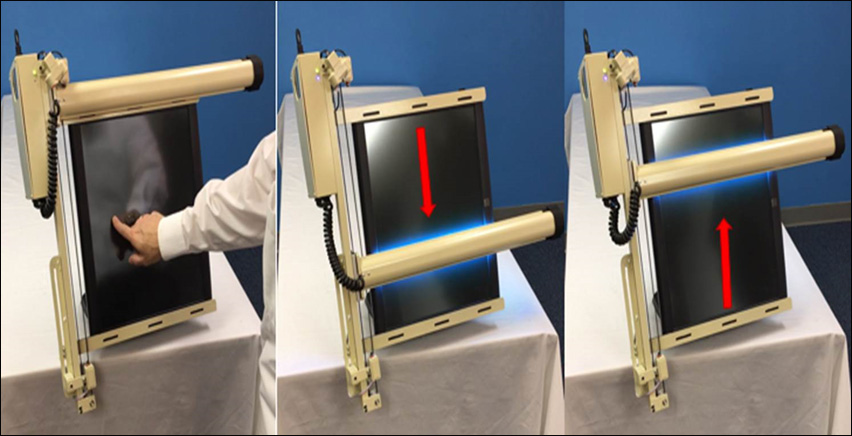Automated UV-C device helps rid patient touchscreens of viruses
Click Here to Manage Email Alerts
SAN DIEGO — An automated device that uses ultraviolet C light as a disinfectant can help reduce the transmission of viruses from computer touchscreens in patient waiting rooms, according to study findings presented at IDWeek.
Used in combination with alcohol-based hand sanitizer, the UV-C device completely prevented virus transfer from contaminated touchscreens to patients’ hands during a laboratory experiment conducted by Curtis J. Donskey, MD, professor of medicine at Case Western Reserve University and an infectious disease physician at the Louis Stokes Cleveland VA Medical Center, and colleagues.
Donskey said the UV-C device was developed in a collaborative effort between the Cleveland VA and Diversey, Inc. and was designed to be automatically activated after a patient uses the touchscreen.
“Our major goal was to develop something that would provide automatic and safe disinfection without requiring the user to do anything,” Donskey told Infectious Disease News.
According to Donskey, there is limited information about the magnitude of hospital touchscreen contamination, but poor hand hygiene habits could mean that patients are frequently exposed to viral contamination, particularly during respiratory virus season. He pointed to a 2016 study in the American Journal of Infection Control in which researchers isolated opportunistic pathogens from hospital touchscreens, including vancomycin-resistant Enterococcus (VRE) and Clostridium difficile.

For their study, Donskey and colleagues contaminated touchscreens in the lab with MS2, a nonenveloped virus that was used as a substitute for norovirus. MS2 is nonpathogenic to humans. They randomly assigned 36 volunteers evenly into one of six groups: no intervention (control), alcohol-based hand sanitizer for 10 or 30 seconds, UV-C only, or UV-C plus hand sanitizer for 10 or 30 seconds.
They had volunteers with clean hands touch the screens, then cultured their hands to measure the contamination. Each intervention reduced the contamination of the volunteers’ hands compared with those of controls, but only the combination of using hand sanitizer plus disinfecting the screens with the UV-C device was effective in completely preventing virus transfer, Donskey and colleagues reported.
In a separate part of the study, they observed 50 patients use computer touchscreens in an actual hospital waiting area and noted that just four of the patients — 8% — used available hand sanitizer afterward.
Donskey and colleagues said the results of their study show that using alcohol-based hand sanitizer alone or in combination with a UV-C device could reduce the transmission of viruses from computer touchscreens. They also said it is important to educate patients about the importance of cleaning their hands after using the screens. Donskey said installing a UV-C device to decontaminate hospital touchscreens is “feasible.”
“The major concern for most facilities would be to ensure safety,” he said. “We did not find any evidence of UV-C exposure to personnel during use of the device and did not identify other safety issues.” – by Gerard Gallagher
Reference:
Alhmidi H, et al. Abstract 1330. Presented at: IDWeek; Oct. 4-8, 2017; San Diego.
Gerba CP, et al. Am J Infect Control. 2016;doi:10.1016/j.ajic.2015.10.013.
Disclosures: The authors report no relevant financial disclosures.

